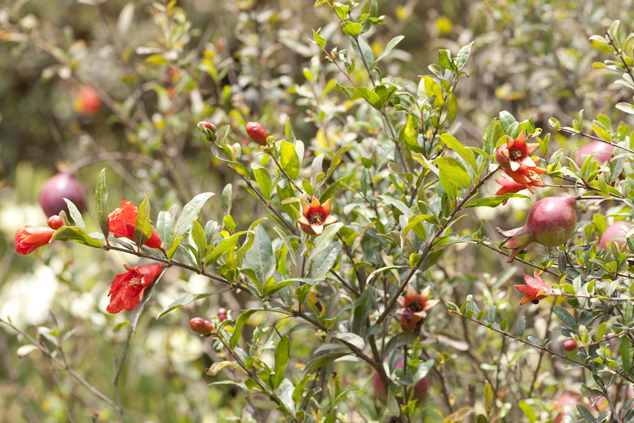Punica granatum
Native of the Mediterranean region, but cultivated for its fruit in most tropical and subtropical regions, or even in warm-temperate lands. Planted commonly in Guatemala, at almost all elevations except the highest, but only in small quantities.
Granada, Punica granatum tree, notice all the stages of the flower and fruit. Casa del Comisario, Concepción Chiquimulilla; our appreciation to Efraín Gudiel.
Granada, Punica granatum flower. Photo by Nicholas Hellmuth at Casa del Comisario, Concepción Chiquimulilla.
The fruit is eaten fresh or used for juice and fermented to produce the cordial granadine.
Granada, Punica granatum green fruit, not mature. FLAAR archive, Guatemala.
The pomegranate apparently is little esteemed in Central America, being unable to compete in quality with numerous excellent tropical and temperate fruits. The many large seeds are an objectionable feature. The wood is hard, close-grained, and light yellow. It has been used as a substitute for boxwood (Buxus) in making engravings. The bark and the rind of the fruit are astringent, and in some regions are utilized for tanning and dyeing leather.
The bark of the stem and root its active properties due to an alkaloid pelletierine is an efficient vermifuge, especially in the case of tapeworms.
The large flowers are brilliantly colored and decorative. The pomegranate is by no means an exclusively tropical plant, for it survives winter in the United States as far north as Washington, D.C., although probably it does not produce fruit at that latitude.
Granada, Punica granatum mature fruit, edible part at this stage. FLAAR archive, Guatemala.
Source: Description of the species are from the Flora de Guatemala (Standley and Williams 1962)
First posted October 04, 2011

















































































